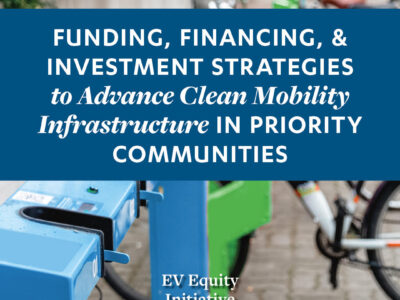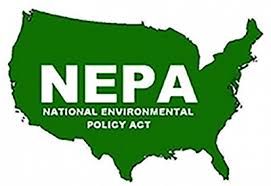Transportation
35 Major Climate Initiatives Under Biden
By any measure, it has been an eventful four years for climate policy, with billions in spending and many major regulations finalized. Here’s a timeline of the Top 30 actions.
In light of President Biden’s withdrawal from the 2024 presidential race yesterday, we thought it was appropriate to update this piece about the climate legacy of the Biden-Harris Administration. In his four years in office, Donald Trump rolled back essentially every existing federal policy to limit climate change. The picture under the Biden Administration has …
Continue reading “35 Major Climate Initiatives Under Biden”
CONTINUE READINGHere We Go Again! (Maybe)
The possibility of a second Trump presidency looms ahead. Time for some contingency planning!
As the Project 2025 report shows, people on the other side are doing their own contingency planning, and so should climate advocates. We can expect many of the same actions, beginning with massive regulatory rollbacks (over a hundred rollbacks last time around).
CONTINUE READINGMajor League Soccer’s LAFC Has a Big Oil Problem Too
The Dodgers are not the only LA sports team sullying their brand by taking oil money. Beloved soccer club LAFC recently renewed a partnership with Chevron.
BMO Stadium, the home of Los Angeles Football Club, is revered as one of the best places to watch soccer in the U.S., thanks to forward-thinking design and good vibes among their famously devout fans. BMO has even been called the future of stadium design. So, it’s all the more jarring that LAFC allows Big …
Continue reading “Major League Soccer’s LAFC Has a Big Oil Problem Too”
CONTINUE READINGThe Hawai’i Youth Climate Trial
Thirteen youth plaintiffs say the Aloha State is failing to live up to its ambitious climate goals. Here’s what to watch for as Navahine v. Hawaiʻi Department of Transportation goes to trial this month.
Last summer, many Americans were glued to the events unfolding in Maui as a raging inferno overtook the town of Lahaina, trapping thousands and killing at least 99 people. This summer, we’ll see 13 youth plaintiffs in Hawaiʻi take the state’s Department of Transportation to court for allegedly failing to implement climate policies meant to …
Continue reading “The Hawai’i Youth Climate Trial”
CONTINUE READINGFinancing and Investment Strategies for an Equitable Clean Mobility Transition
New CLEE / Prospect Silicon Valley report outlines top strategies from a series of expert convenings
The transition to 100 percent zero-emission vehicle (ZEV) sales by 2035 will require massive investment in electric vehicle charging infrastructure throughout California and in other states that have adopted the same phaseout targets. A variety of structural barriers to charging access make California’s priority populations particularly reliant on public charging infrastructure to meet their ZEV …
Continue reading “Financing and Investment Strategies for an Equitable Clean Mobility Transition”
CONTINUE READINGTrump’s War on Environmental Protection: A Chronology
Yes, there were over 100 environmental rollbacks. Here are the biggest.
From when he took office to the day he left, Trump lead a steady drumbeat of environmental rollback after environmental rollback. His goals: eliminate limits on pollution from fossil fuels and end protection of public lands.
CONTINUE READINGCould Trump Cancel the IRA?
Probably not. But also possibly yes.
The Inflation Reduction Act is Biden’s signature climate initiative. Trump has already called for repealing it, and so have some Republicans in Congress. Given the IRA’s huge cuts in carbon emissions, that would be a tragedy. Can he do that? He would certainly face some very significant barriers. Trump would need Republican majorities in the …
Continue reading “Could Trump Cancel the IRA?”
CONTINUE READINGNo, EVs are Not Worse for the Planet
There’s an electric car culture war raging. It doesn’t hurt to say obvious things, like that electric cars reduce driving costs and pollute far less than gas-powered cars.
If you have somehow managed to escape the frenzied political headlines about electric vehicles, first I envy you and second, I must regrettably inform you that the EV has become an acronym of partisan rancor on par with IVF, DEI, and CRT. There’s a lot of reasons for this electric car culture war: President Biden …
Continue reading “No, EVs are Not Worse for the Planet”
CONTINUE READINGA Word on Congestion Pricing
Time for local leaders to restart the discussion
Yesterday, New York’s Metropolitan Transportation Authority approved the city’s long-planned and hotly debated congestion pricing program, the first of its kind in the US. The program will involve a $15 toll for vehicles entering midtown or lower Manhattan, with discounts for some qualifying drivers and credits for bridge and tunnel tolls so drivers aren’t double-charged. …
Continue reading “A Word on Congestion Pricing”
CONTINUE READINGWill the NEPA Amendments Speed Up Permitting?
Probably not much. If at all.
I’ve blogged quite a bit about the challenges of interpreting the NEPA amendments, which snuck through as part of last year’s debt ceiling bill. I haven’t said much about their impact. Given the amount of energy infrastructure we need to build in the near future, a streamlined permitting process would be great. Alas, I don’t …
Continue reading “Will the NEPA Amendments Speed Up Permitting?”
CONTINUE READING













